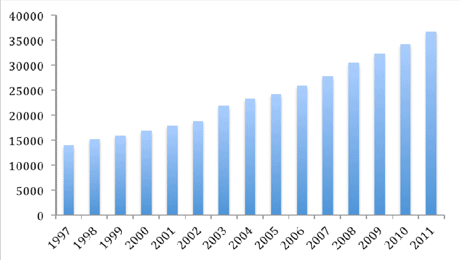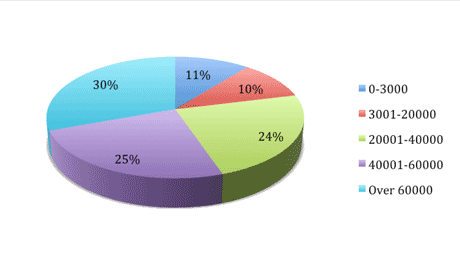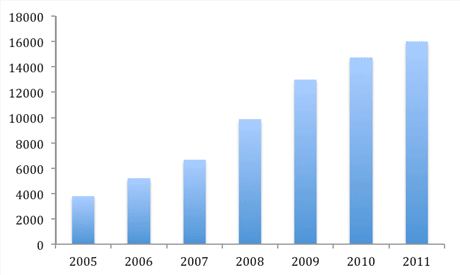Tesco investors face a long, costly slog to recovery
For years, Tesco dominated Britain's supermarket sector - but has since lost ground to its competitors. Phil Oakley examines where Tesco went wrong, and what it will take for it to recover.
The once unstoppable Tesco juggernaut seems to be stuck in reverse. The departure of its UK chief executive raises more questions about its strategy. It looks like the company may have fallen victim to the cardinal sin of retailing losing touch with your customers.
Can it win them back? Or will it follow in the footsteps of businesses like Marks & Spencer or Sainsbury's who, once toppled, never reclaimed their previous dominance?
Putting profits before customers?
All great businesses put their customers first. From the mid-1990s, for about ten years, Tesco did this.
MoneyWeek
Subscribe to MoneyWeek today and get your first six magazine issues absolutely FREE

Sign up to Money Morning
Don't miss the latest investment and personal finances news, market analysis, plus money-saving tips with our free twice-daily newsletter
Don't miss the latest investment and personal finances news, market analysis, plus money-saving tips with our free twice-daily newsletter
Customers loved it. It had a beautifully simple business model: nice stores, with good food at low prices. It then introduced a loyalty card that saved its customers even more money.
To make things even better, it made every effort to make sure you didn't have to queue to get through the checkouts. Tesco became so successful that it eventually accounted for £1 of every £8 spent in the UK retail sector.
Fast-forward to 2012 and things look very different. Tesco is losing customers to Asda, Sainsbury's, Waitrose and hard discount retailers like Aldi and Lidl. Why?
City analysts point to tired-looking stores, a lack of focus on fresh food and poor customer service. Having been in a few Tesco stores recently, I'd say there's some substance to these claims.
In short, Tesco may have cut costs too much and put the achievement of profit before pleasing its customers. If this is true, then it will face an uphill task in winning back disgruntled shoppers.
Tesco has too many of the wrong sort of shop
Apart from giving customers what they wanted, a key factor behind Tesco's dominance was that it bought lots of land and built lots of stores across the UK.
Have a look at the chart below. It shows a massive increase in Tesco's selling space during the last decade.

(Source: Tesco annual reports)
Tesco selling space growth
Since 1997, Tesco has increased its selling area by 161%, compared with 59% for Sainsbury's. As these stores matured, Tesco was able to gain more than 30% of the UK grocery market.
But can Tesco get any bigger? Just how many supermarkets do we need? There comes a point when having more stores becomes self-defeating. Either they cannot attract enough customers to make good returns, or they start taking sales from existing stores a process known as cannibalisation.
We don't know for sure that Tesco is cannibalising its own sales. But given the number of so-called 'Tesco towns' it can't be discounted.
It's not just a question of whether Tesco has too many stores, but whether it has the wrong type of stores.
Tesco store portfolio
Over 30% of Tesco's stores are in the 60,000 square feet or more category the big out-of-town hypermarkets. These stores were built to sell increasing amounts of non-food items such as electrical goods and clothing.

(Source: Tesco)
The problem for Tesco and others is that more and more non-food items are being bought online. As a result, Tesco could be left with increasing amounts of unproductive selling space. Short of shutting these stores, it's difficult to see how Tesco fixes this problem.
Tesco's competition has become stronger
Another problem for Tesco is that it made hay during a period when one or more of its major rivals had difficulties. That's not true now.
In fact, there is a risk that Tesco could become stuck in the middle of an increasingly polarised food retail market and may struggle to communicate what it stands for.
It's neither a discounter like Aldi, nor is it at the quality end of the market like Marks & Spencer or Waitrose. In fact, increasingly, Asda seems to have occupied the value position that Tesco once dominated.
How can Tesco turns things around? It will try cutting prices, but it bungled its 'Big Price Drop' last year by removing double club card points to pay for it. It was also accused of increasing prices before the price-cutting campaign began, leading many to ask if the cuts were real.
One thing's for sure, turning Tesco around will be expensive. Analysts at JP Morgan Cazenove estimate the cost at nearly £400m a year for the next two years. That means lower profits. And things could get worse if customers don't return.
Tesco bulls point to its overseas business as a key attraction. But while Tesco's operations in Thailand, South Korea and Poland have done well, overall returns on the overseas business are quite modest.
During 2010/11, the overseas business made an after-tax return on investment of 7% - satisfactory, but not stellar. The US business, Fresh & Easy, lost £181m last year, and looks some way from justifying the money that Tesco has thrown at it.
Tesco's hidden debt' mountain
Another area where Tesco has made some smart moves is in realising the value of its property. Since 2005, it has raised more that £8bn, mainly by selling its stores to property investors and renting them back (known as sale and leaseback).
Tesco has achieved very good prices (low equivalent rental yields) that have given it the cash it needs to invest and pay dividends to shareholders.
There's nothing wrong with doing this. However, just like remortgaging your house, all you are doing is getting cash now that has to be paid back later. The rental obligation on the stores it has sold is a debt-like liability and has soared in recent years (see chart below).

(Source: Tesco annual reports)
Future operating lease obligations
We certainly don't think Tesco is in any danger of going bust. But taking account of this, off-balance-sheet debt does alter the way you look at the business performance.
MoneyWeek videosWhat is return on equity?The controversial ratio that quantifies how much value for money a company can give shareholders.Watch all of Tim's videos here
We are big fans of looking at the return on capital when deciding whether a business is worth investing in. It seems only sensible that, as Tesco is using the rented stores, they should be included when looking at financial returns.
We will not go into detail here, but we estimate that Tesco may have as much as £12bn of off-balance-sheet debt. If we adjust for this, then we estimate ROCE (before tax) in 2010/11 was 10.4% compared with Tesco's reported ROCE of 12.9% - these are not the hallmarks of a brilliant business.
We have performed the same exercise for Morrisons. Here ROCE declines from 13.25% to 12.5% - again solid but not great.
But doesn't the share price already discount this?
Tesco's share price isn't desperately expensive. But the fact is, a business that makes modest returns on capital, and is also suffering from growth problems, shouldn't be expensive.
City analysts expect flat profits between 2012 and 2013, and minimal dividend growth. We think that this might be optimistic given the problems Tesco faces. So, while the shares may look appetising on 9.4 times 2013 profits with a prospective dividend yield of 4.7%, I'm not tempted. Indeed, given the tough times the sector faces ahead, I wouldn't be desperately keen to invest in the supermarket sector as a whole if pushed, I'd say Morrisons is the best bet in the sector right now.
Disclosure - Iown shares in Morrisons.
Get the latest financial news, insights and expert analysis from our award-winning MoneyWeek team, to help you understand what really matters when it comes to your finances.
Phil spent 13 years as an investment analyst for both stockbroking and fund management companies.
After graduating with a MSc in International Banking, Economics & Finance from Liverpool Business School in 1996, Phil went to work for BWD Rensburg, a Liverpool based investment manager. In 2001, he joined ABN AMRO as a transport analyst. After a brief spell as a food retail analyst, he spent five years with ABN's very successful UK Smaller Companies team where he covered engineering, transport and support services stocks.
In 2007, Phil joined Halbis Capital Management as a European equities analyst. He began writing for MoneyWeek in 2010.
-
 How cancelling unused direct debits could boost your pension by £37,000
How cancelling unused direct debits could boost your pension by £37,000A new year refresh of your spending could save you money and help boost your pension pot.
-
 NS&I cuts interest rates on 8 savings accounts
NS&I cuts interest rates on 8 savings accountsNS&I will now offer less attractive interest rates for customers wishing to lock their savings away to grow for one, two, three or five years.